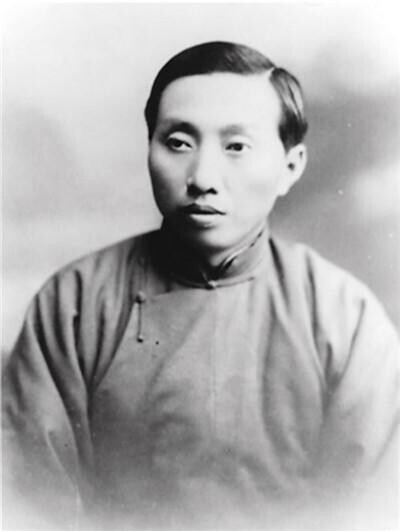
Chen Wangdao
The first edition of the Communist Manifesto, published in August 1920, was printed as "Communist Manifesto" due to typographical errors.
The second edition of the Communist Manifesto, published in September 1920, changed the cover from a red background to a blue background, and the title error was corrected.
In the first 10 years of the 20th century, only some passages of the Communist Manifesto were Chinese translated into chinese newspapers and periodicals. Until 1919, there was no complete Chinese translation.
With the spread of Marxism in China, more people hope to see a systematic and complete Chinese translation and learn Marxist theory. But translating the Communist Manifesto is not an easy task. The Communist Manifesto consists of four chapters, namely the Introduction and the Main Text, which are rich in content and profound in thought. From 1872 to 1893, German, Russian, English, Polish, and Italian editions were published, and many students studying in Japan read the Japanese version. If translators cannot refer to multiple versions at the same time, or do not have a deep understanding of Marxism, Chinese literacy, etc., it is difficult to translate the Communist Manifesto at a high level.
At the beginning of 1920, under the recommendation of Shao Lizi and others, Chen Wangdao, who had returned from his trip to Japan, undertook this task. Chen Wangdao is proficient in English and Japanese, and has a deep foundation in Chinese, publishing many articles in the vernacular. He also came into contact with and read many books and articles on Marxist theory, and participated in the founding of the internal theoretical journal "The Communist Party" published by the Shanghai Communist Group, so he had the ability to undertake this work.
In order to concentrate on translating the Communist Manifesto well, Chen Wangdao returned to his hometown of Fenshuitang Village in Yiwu, Zhejiang Province, locked himself in a small firewood house, referred to the Japanese and English versions, and worked day and night, choosing words and sentences, and working selflessly. One day, his mother brought rice dumplings to his house and put brown sugar water next to him, telling him not to forget to dip them and eat them. After a while, the mother asked uneasily in the courtyard, "Did you eat the rice dumplings?" He replied, "Eat it, but it's sweet." When my mother entered the house to clean up, she found that his mouth was stained with ink, but the brown sugar water next to him did not move. It turned out that Chen Wangdao had paid all his attention to the manuscript and mistakenly thought of the ink as brown sugar water.
In Chen Wangdao's heart, the taste of truth was sweeter than brown sugar. More than two months later, the nearly 20,000-word Communist Manifesto was finally translated. In August 1920, the Chinese edition of the Communist Manifesto was officially published in Shanghai, with a portrait of Marx on a red background on the cover. Due to typographical errors, the title of the book was printed as the "Communist Manifesto". But everyone did not care, progressives competed to tell, buy and read, and the first 1,000 copies printed were quickly sold out. The cover of the second edition was changed from a red background to a blue background, and the title error was corrected.
In the first complete translation of the Communist Manifesto Chinese, Chen Wangdao translated the terms "proletarians" and "class struggle", providing a powerful ideological weapon for the spread of Marxism in China, the theoretical construction of the party and the revolutionary struggle. Later translator of the Communist Manifesto, Cheng Fangwu, greatly admired Chen Wangdao's translation, writing in the Afterword to the new 1978 translation of the Communist Manifesto: "The Japanese translation at that time was probably very crude, and the Chen (i.e., Chen Wangdao) translation was inevitably very inaccurate. But it played a very important educational role for the Chinese revolutionary cadres and masses before the revolutionary storm, and only the 'propertied', 'proletarians', 'class struggle' and 'proletarians of the whole world, unite!' Such words give the revolutionary masses, who are looking for light in the darkness, an incalculable force. (Zhang Chunwang)
(The pictures in this article are provided by the China Overseas Chinese Research Institute)
Source: People's Daily Overseas Edition